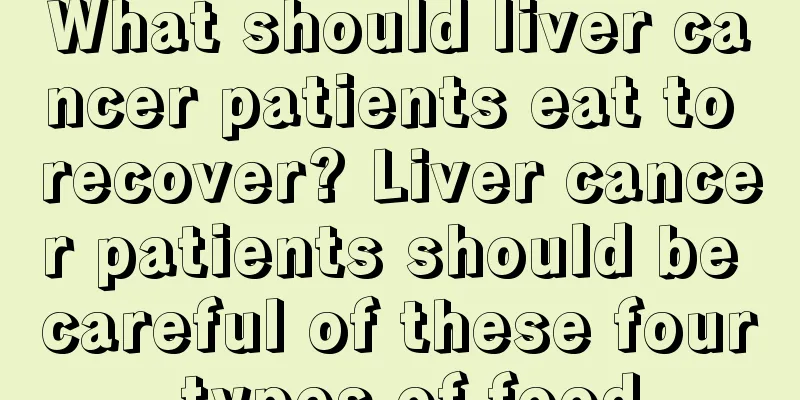What medicine should I take for interstitial cystitis and what are the usual symptoms?

|
We should all have heard of cystitis, but we may not be very familiar with interstitial cystitis. In fact, it is also one of the urological diseases. It's just that the incidence rate is relatively low. The incidence rate is higher than that in women, and patients generally experience symptoms such as abnormal urination, painful urination, frequent urination and increased nocturia at night. If not treated in time, it may lead to hydronephrosis, ureteral reflux or even renal failure, which are very serious. So we must pay more attention to it in our daily life. Taking medication: The treatments for interstitial cystitis mainly include non-surgical treatment and surgical treatment, and the drug treatments mainly include oral medications and bladder drug instillations. Western medicine generally chooses to use antibiotics for treatment, such as sulfamethoxazole (SMZ) 2.0g, trimethoprim (TMP) 0.4g, and sodium bicarbonate 1.0g, taken all at once; or 5 tablets of co-trimoxazole or 3.0g of amoxicillin, or 400mg of trimethoprim taken all at once. Although Western medicine works quickly, each patient's condition is different, so not every method is applicable. You have to go to a professional hospital for examination before the doctor knows which treatment the patient needs. Surgical treatment is suitable for ulcerative interstitial cystitis. Transurethral electrosurgical resection can significantly improve the patient's symptoms, but it is easy to relapse. Bladder augmentation and cystectomy are very traumatic, so patients should choose carefully. Symptoms: Interstitial cystitis often occurs in middle-aged women. Patients with interstitial cystitis often have severe urinary frequency, urgency and increased nocturia. It is chronic and progressive, but their urine tests are normal. There is microscopic or gross hematuria. Patients with interstitial cystitis often experience pain in the suprapubic area, which is particularly evident when the bladder is full, sometimes accompanied by urethral or perineal pain, which is relieved after urination, and sometimes even hematuria. On clinical examination there may be some tenderness in the suprapubic area or bladder area pain on palpation of the anterior vaginal wall. Some women even experience pain during sexual intercourse, or some patients have a history of allergic diseases; when they undergo physical examinations, there are often no positive signs, etc. These are all symptoms of female interstitial cystitis. The disease usually lasts for several years. What is very special is that the disease develops rapidly at the beginning, but quickly stabilizes after a period of time. Even without treatment, there is no sign of deterioration. Female interstitial cystitis can threaten human health and cause harm to the patient's body and mind. Therefore, we should go to the hospital for regular check-ups to understand the symptoms of the disease. At the same time, we should also work hard on diet and health care. We can eat more milk, buttermilk and other products, while avoiding aged cheese, chocolate, and the like, and avoid eating apples and bananas. |
>>: Is it useful to take Sanjin tablets for acute cystitis? Can it cure it completely?
Recommend
How can liver cancer patients exercise to benefit their health
The diagnosis and treatment of liver cancer is im...
What happens if you don’t sleep all night? Here are 7 ways to improve your sleep quality
Not sleeping all night can cause great harm to th...
Can osteosarcoma be cured? How to cure osteosarcoma
Osteosarcoma, like other malignant tumors, cannot...
How to wash off ink stains on clothes
Basically, we need to change clothes every day in...
Is it good to sleep with your head facing the door
Survey results show that we spend one-third of ou...
What is the reason for high peroxidase
Many people find that their thyroid peroxidase le...
How many dried mulberries do you need to soak in water in a day
Around the Qingming Festival every year is the se...
Health details for preventing osteosarcoma
Prevention can avoid the occurrence of diseases. ...
The relationship between cervical cancer and marriage is also very close
The relationship between cervical cancer and marr...
Can facial cleanser wash off liquid foundation?
Many people are too lazy to use makeup removers, ...
Can brain cancer be checked by CT?
The most important and only way to determine whet...
What are the prevention methods of lung cancer? 5 effective ways to prevent lung cancer
Lung cancer is a very common malignant tumor, but...
Will dental implants hurt?
Dental implants are an effective and best way to ...
Is apatinib effective for liver cancer? Can it be used to treat liver cancer
Apatinib is effective for liver cancer. Apatinib ...
Want to lose weight, quit smoking, or stop drinking? Let's play Tetris
One study showed that playing the game for three ...









